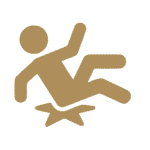Mon to Sun - 24/7 365
Distracted Driving: The Growing Epidemic and Its Prevention
Table of Contents
ToggleDistracted driving has rapidly evolved into a severe public safety hazard that affects roadways worldwide. This epidemic is responsible for thousands of fatalities and injuries annually, highlighting the urgent need for effective preventative measures and increased awareness.
The Reality of Distracted Driving
Distracted driving refers to any activity that diverts a driver’s attention from the road. It’s a multifaceted issue that encompasses visual, manual, and cognitive distractions. With the rise of smartphone usage, distracted driving has surged dramatically, making roads significantly more dangerous.
Types of Distractions Explained
- Visual Distractions: These occur when drivers look away from the road to focus on any other activity, such as adjusting the GPS or looking at a text message.
- Manual Distractions: These involve drivers taking one or both hands off the steering wheel, whether to eat, adjust the radio, or handle a mobile phone.
- Cognitive Distractions: These distractions happen when the driver’s thoughts are not focused on driving. This can be due to stress, daydreaming, or engaging in deep conversations with passengers.
Understanding these distractions helps in developing targeted strategies to combat distracted driving effectively.
Startling Statistics and Their Impact
The National Highway Traffic Safety Administration (NHTSA) reports that in 2019 alone, 3,142 people were killed due to distracted driving. These numbers don’t just represent statistics; they symbolize lost loved ones: family members, friends, and colleagues, making it clear why immediate action is essential.

Proactive Prevention Measures
Legislative Efforts
In response to the rising tide of distracted driving incidents, many states have implemented stringent laws that prohibit texting while driving and the use of handheld mobile devices. Enforcement of these laws, combined with penalties, serves as a deterrent against distracted driving.
Advancements in Technology
Automotive and tech industries are continuously working on innovations designed to reduce distractions. Features like automatic emergency braking and apps that limit phone functionality while driving are becoming more prevalent in new vehicle models.
Educational Campaigns
Public awareness campaigns play a crucial role in educating drivers about the risks associated with distracted driving. Programs like “U Drive. U Text. U Pay.” aim to inform the public about the severe repercussions of not paying attention to the road.
The Role of Personal Responsibility
Despite technological advancements and legislative actions, the fundamental solution lies with individual drivers. It is crucial for everyone behind the wheel to make a conscious effort to eliminate distractions and prioritize road safety.
Conclusion
Distracted driving is an epidemic that requires a multifaceted approach to eradicate. By combining laws, technology, public awareness, and personal accountability, we can work towards making our roads safer. Everyone has a role in preventing these unnecessary tragedies.
Legal Assistance for Distracted Driving Accidents
If you’ve been impacted by a distracted driving accident, Ehrlich & Naparstek Personal Injury Lawyers are here to support you. With expertise in handling personal injury claims resulting from distracted driving, we provide the guidance and representation you need to navigate these challenging times.
Contact us 24/7 at (772) 842-8822 (Stuart) or (561) 687-1717 (West Palm Beach) to schedule an appointment. Our office is located at 1330 SE Federal Hwy, Stuart, FL 34994.
For additional resources on preventing distracted driving and staying safe on the road, please visit the National Highway Traffic Safety Administration’s Distracted Driving page.
Contact Ehrlich & Naparstek Personal Injury Lawyers for expert legal help following a distracted driving incident. Our dedicated team is ready to assist you 24/7.

clients have
confidence in us
Best Lawyer, Simply Incredible, Unbelievably Efficient, and Utterly Reliable - This law firm exceeds all expectations! I assure you, disappointment is not in their vocabulary. Experience it for yourself! They are unequivocally the finest attorneys in the state. Don't hesitate; schedule your consultation today!
I owe a debt of gratitude to my friend for referring me to Matt Naparstek as my attorney after my auto accident. Naparstek and his team were not just professional and courteous but also genuinely concerned about my medical well-being. They swiftly navigated the legal process, securing both medical treatment without upfront costs and a speedy settlement, unlike other firms. I can't thank them enough and highly recommend their services!
The Ehrlich & Naparstek Attorney Firm truly stands out as exceptional, thanks to their outstanding team of professionals. From the moment I engaged with them, I was met with nothing but excellence, professionalism, and genuine care. Their unwavering dedication to their clients' well-being is truly commendable. This team not only works diligently but also excels in their roles, leaving no room for doubt about their competence. I couldn't have chosen a better group to represent me in my worker's compensation claim. The Ehrlich & Naparstek team, you all are absolutely incredible and rock stars in your field! Thank you for your remarkable service.
Accident Types
important PERSONAL INJURY FAQ
vision makes us who we are
What is the statute of limitations for personal injury claims in Florida?
In Florida, the statute of limitations for most personal injury claims is four years from the date of the injury. This means that if you've been injured, you have four years to initiate legal proceedings. If you fail to file your lawsuit within this time frame, you may lose your right to seek compensation.
How is fault determined in Florida auto accidents?
Florida operates under a no-fault insurance system. This means that after most traffic accidents, your own insurance policy will compensate you for medical expenses and lost income, irrespective of who was at fault. However, in severe injury cases, you might be able to step outside this no-fault system and file a lawsuit against the at-fault driver.
What is Florida's comparative negligence rule?
Florida follows a pure comparative negligence rule. If you're found to be partially at fault for your injury, your compensation may be reduced by a percentage equal to your share of the blame. For instance, if you're found to be 20% at fault, you can still recover 80% of your total damages.
What damages can I recover in a personal injury lawsuit in Florida?
In Florida, you can seek compensation for both economic and non-economic damages. Economic damages include tangible costs like medical bills and lost wages, while non-economic damages cover intangibles like pain and suffering, emotional distress, and loss of enjoyment of life.
How long does it typically take to settle a personal injury case in Florida?
The duration varies based on the complexity of the case, the parties involved, and the evidence. While some cases might settle quickly, others, especially those that go to trial, can take months or even years to resolve.
How much will it cost me to hire a personal injury attorney?
We operate on a contingency fee basis. This means that we only get paid if you win your case or secure a settlement. Typically, the fee is a percentage of the compensation you receive.
What should I do immediately after an accident in Florida?
First, prioritize your safety and seek medical attention. Then, if possible, document the scene, take photographs, gather witness information, and report the incident to the police or relevant authorities. It's also advisable to contact a personal injury attorney as soon as possible.
What if the person who hit me doesn't have insurance?
If you're hit by an uninsured or underinsured driver in Florida, you can turn to your own insurance policy's uninsured/underinsured motorist coverage. This coverage can help compensate for your injuries and damages.
How do I prove pain and suffering in a personal injury case?
Pain and suffering are subjective and can be challenging to quantify. Evidence such as medical records, therapy sessions, personal journals, and testimonies from friends and family can help establish the extent of your pain and suffering.
Make an inquiry?
vision makes us who we are















